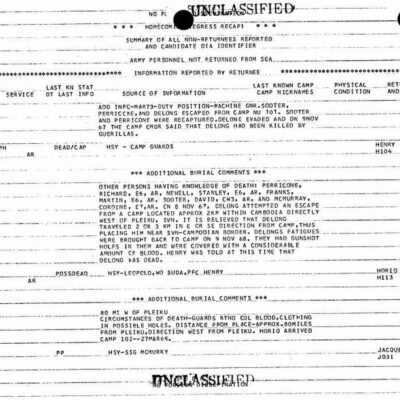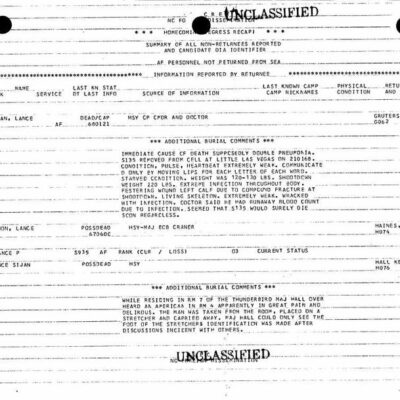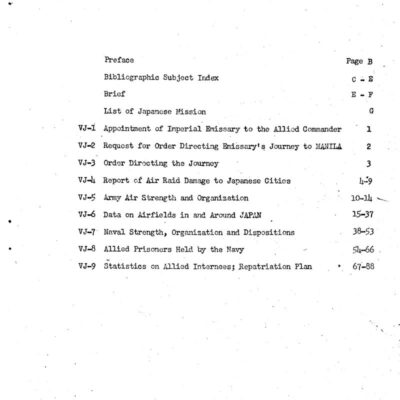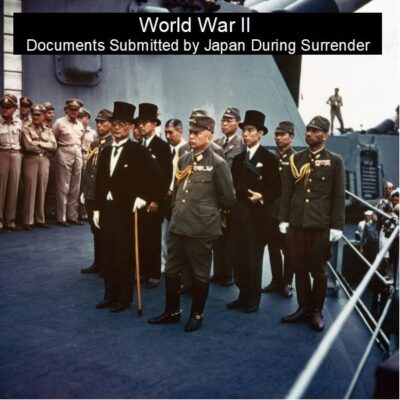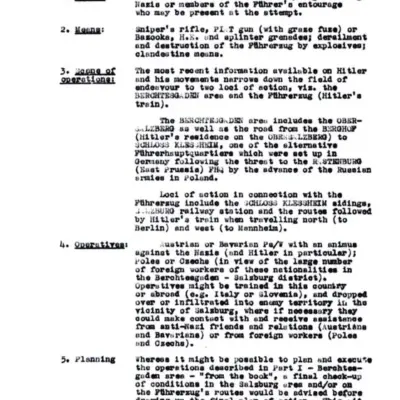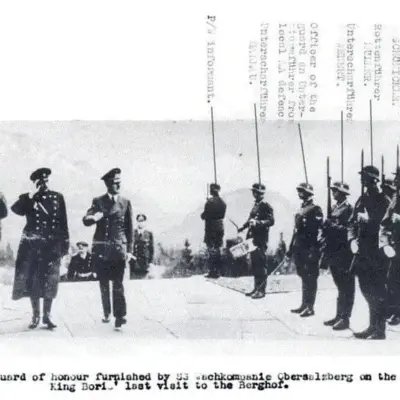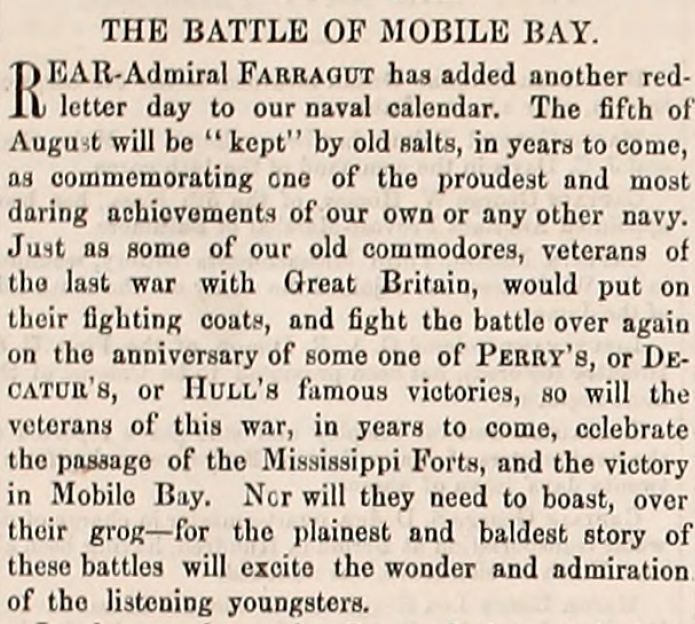
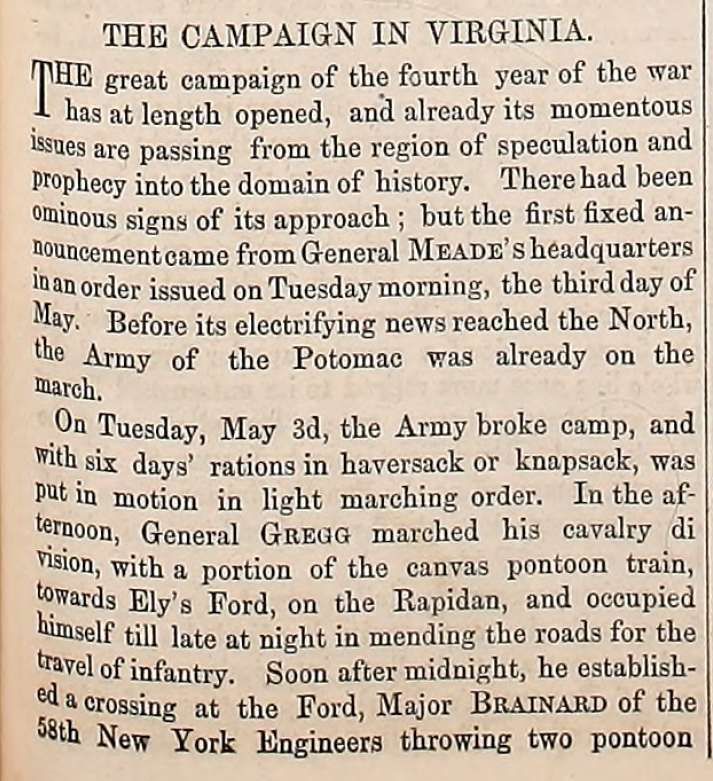

Civil War: Army Navy Journal & Gazette Volume 1 (1863 – 1864)
$19.50
Description
This volume compiles 48 issues of the United States Army and Navy Journal and Gazette, spanning August 29, 1863, to August 20, 1864, encompassing a total of 764 pages. This publication, often shortened to Army and Navy Journal or even Armed Forces Journal, held the prestigious position as the nation’s foremost military periodical during the Civil War era. While the complete set isn’t present, this volume includes a substantial portion, covering issues one through twenty-two, twenty-four through thirty-three, and thirty-seven through fifty-two.
The Civil War acted as a catalyst for the growth of military professionalism, leading to the establishment of numerous professional organizations and their associated journals. This period witnessed the birth of significant publications such as the Proceedings of the United States Naval Institute (founded in 1873), the Cavalry Journal from the United States Cavalry Association, and The Military Surgeon published by the Association of Military Surgeons. Further additions to the landscape of military periodicals included The Journal of the United States Artillery (1892) and the Infantry Journal (later published by the United States Infantry Association, stemming from the Infantry Society founded in 1893). United Service, a journal covering both naval and military matters, also debuted in 1879.
However, the Army and Navy Journal, launched in 1863, predated these publications and held a unique significance. It wasn’t merely a technical journal; according to military historian Richard W. Stewart, its value lay in its broader scope. Beyond purely professional articles, it featured social news and personal items concerning military personnel, fostering a sense of camaraderie and professional unity among its readership, creating a cohesive professional community. The journal acted as a vital connecting force within the military, transcending the purely informational role of its contemporaries. The Army and Navy Journal and Gazette, a publication dedicated to military affairs, owes its existence to the Church brothers, Francis Pharcellus and William Conant. William, having learned the publishing trade assisting his father at the New York Chronicle, went on to a distinguished career in journalism, first as publisher of the New York Sun and later as a Washington correspondent for the New York Times. His military service included a year as a captain in the United States Volunteers, and he also played a significant role in the founding and early leadership of the National Rifle Association (NRA).
Francis Church, his brother, also made a name for himself in journalism, notably covering the Civil War for prominent newspapers like the New York Times and the New York Sun. His most enduring legacy, however, is a single editorial penned in 1897 for the Sun, a reassuring response to a young girl’s heartfelt inquiry about the existence of Santa Claus, which became a timeless classic of American journalism. This piece, titled “Yes, Virginia, there is a Santa Claus,” continues to resonate with readers today.
The Army and Navy Journal itself debuted on August 29, 1863, fulfilling a clear need for a dedicated publication to serve the American military and those interested in its activities. Its inaugural edition proudly declared its purpose as providing an official voice for the defense establishment.
The paper’s content was remarkably comprehensive, covering a wide range of topics. Beyond its coverage of the pivotal events of the Civil War, the Journal meticulously documented military legal proceedings (courts-martial), provided obituaries of notable figures, published official communications from the War Department, announced personnel appointments, listed deserters (AWOLs), and reported on international military developments. Furthermore, it included editorials offering insightful commentary and carried advertisements, reflecting the business side of publishing. Interestingly, the Journal even featured reprinted articles from Confederate newspapers, providing a unique perspective on the conflict by including material from publications such as the Greensboro Journal, Richmond Dispatch, Richmond Enquirer, Richmond Sentinel, and Atlanta Constitutionist. This inclusion of Confederate sources demonstrates a commitment to comprehensive reporting, even during a time of intense national division. The inaugural edition of the Army and Navy Journal boldly declared its intention to be a comprehensive source of military information. It pledged to publish complete, official personnel updates for both the Army and Navy, encompassing appointments, promotions, transfers, casualties, resignations, dismissals, and any other personnel shifts. Furthermore, the journal promised detailed and accurate reporting on all active military operations undertaken by the Army and Navy. Official orders deemed suitable for public dissemination would also be included. The publication’s scope extended beyond the military’s core functions to encompass the Coast Survey and Revenue Service, providing coverage of their operational activities and personnel changes. Medical matters within the Army and Navy were another key area of focus, with the journal promising to report on changes in the medical department, as well as relevant information on military hygiene, surgery, and the overall health of the armed forces.
Beyond personnel and operations, the Army and Navy Journal aimed to be a forum for innovation and analysis. It committed to detailing new military inventions and improvements, reporting on relevant experiments and discoveries both domestically and internationally. The journal also planned to feature accounts of notable military and naval achievements and adventures, including correspondence from service members themselves. It intended to serve as a resource for resolving tactical debates and other questions posed by its readers. International military developments were not neglected; the journal promised to cover significant movements of foreign armies and navies, alongside personnel changes in foreign militaries.
Finally, the Army and Navy Journal aimed to provide a broader cultural perspective for its readership. It planned to offer critiques of literature and art relevant to the military community, and to publish articles on military and naval engineering. The location of naval vessels, reports from Navy Yards, and the movements of foreign naval vessels were also to be included. The publication concluded its ambitious list of promises with a commitment to editorial commentary on topics of interest to soldiers and sailors.
The Battle of Gettysburg, a pivotal event in the American Civil War, concluded two months prior to the launch of the Army and Navy Journal. The journal’s initial publications included coverage of the battle’s aftermath and its various consequences. This collection of 48 issues from the first volume of the Army and Navy Journal covers several pivotal Civil War events. The journal’s reporting would have encompassed a period of significant military activity.
General George Meade’s actions in Virginia from August to November 1863 are detailed. Meade’s leadership involved a series of tactical maneuvers in Virginia, characterized by caution and a lack of decisive victories or defeats. These actions were likely reported on in considerable detail within the journal.
The devastating Battle of Chickamauga Creek, fought on September 19, 1863, near the Tennessee-Georgia border, is another key event. Confederate General Braxton Bragg’s forces triumphed over the Union Army of the Cumberland under General William Rosecrans, resulting in a significant Union retreat to Chattanooga and a staggering 34,444 casualties – a loss that would have dominated the journal’s coverage.
The subsequent Battle of Chattanooga (November 23-25, 1863) is also documented. Following the Confederate victory at Chickamauga, Bragg’s army besieged Chattanooga. The arrival of General Grant, tasked with reorganizing the Army of the Cumberland, led to a Union counteroffensive. Key battles on Lookout Mountain and Missionary Ridge secured a Union victory, lifting the siege and allowing the Union army to advance further into Confederate territory. This pivotal turning point would have been extensively covered in the journal, analyzing the strategic implications and the impact on the war’s trajectory. The journal would have likely highlighted Grant’s strategic brilliance in breaking the siege and opening the way for Sherman’s subsequent Atlanta Campaign.
A major shift in command occurred on March 10, 1864, when Lieutenant General Ulysses S. Grant assumed overall command of the Union armies. This appointment, a significant turning point in the war, would have been a major story in the Army and Navy Journal.
Finally, Grant’s Wilderness Campaign (May-June 1864) is described. Grant’s strategy of relentless engagement against General Lee’s forces in Virginia is detailed, focusing on the opening battle of the Overland Campaign, the Battle of the Wilderness. The journal would have analyzed the three-day battle, noting its inconclusive nature despite heavy Union casualties. The journal would have likely emphasized the significance of Grant’s willingness to absorb losses, contrasting it with Lee’s inability to replace his own dwindling forces, and the beginning of a protracted and bloody conflict between the two generals. The journal would have provided detailed accounts of the battles, troop movements, and strategic decisions. The devastating Battle of Cold Harbor, fought from May 31st to June 12th, 1864, saw General Grant launch a disastrous frontal assault on entrenched Confederate positions. This reckless attack resulted in catastrophic Union losses; more than 7,000 Union soldiers perished in a mere twenty minutes. The overall Union casualties, according to historian Edward Bonekemper, were even more staggering, reaching a total of 12,737, comprising nearly 1,844 fatalities, over 9,077 wounded, and a further 1,816 captured or missing. While the Confederates, under General Lee, suffered significantly fewer casualties – approximately 4,595, including 83 killed, 3,380 wounded, and 1,132 captured or missing – this victory came at a steep price for Lee’s already depleted army. Indeed, Cold Harbor marked Lee’s final decisive victory of the war, a grim milestone in the Confederacy’s dwindling fortunes.
On June 19th, 1864, the Confederate raider CSS Alabama met its end at the hands of the USS Kearsarge in a naval battle off Cherbourg, France. The Alabama, seeking repairs and resupply, was decisively sunk, removing a significant threat to Union shipping.
In July 1864, Confederate General Jubal Early led a daring raid into Maryland, advancing to within a mere five miles of Washington D.C. Early’s forces even shelled the city’s northern defenses, causing alarm and panic. However, this audacious incursion was short-lived; Union forces swiftly counterattacked, repelling Early and driving him back into Virginia by July 13th.
The Battle of Mobile Bay, on August 5th, 1864, witnessed a significant Union naval triumph. Rear Admiral David G. Farragut’s Federal fleet engaged and overwhelmed the Confederate fleet under Admiral Franklin Buchanan, simultaneously overcoming the three forts defending Mobile Bay’s entrance. This victory secured control of a crucial Confederate port.
Finally, August 1864 marked the commencement of General William T. Sherman’s Atlanta Campaign. With his forces departing from Chattanooga, Sherman initiated a relentless campaign that would ultimately lead to the capture of Atlanta, a pivotal strategic and symbolic victory for the Union.
Timeline of Events from “Civil War: Army Navy Journal & Gazette Volume 1 (1863 – 1864)”
1863
- July 1-3: The Battle of Gettysburg takes place (mentioned as having occurred two months before the first issue of the Army Navy Journal)
- August 29: The first issue of the Army Navy Journal and Gazette of the Regular and Volunteer Forces is published.
- August – November: General George Meade leads several cautious and inconclusive military movements through Virginia.
- September 19: The Battle of Chickamauga Creek takes place. Confederate forces under General Braxton Bragg defeat Union forces led by General William Rosecrans, forcing the Union Army of the Cumberland to retreat to Chattanooga.
- November 23-25: The Battle of Chattanooga. Union forces under General Ulysses S. Grant break the Confederate blockade of Chattanooga, forcing Confederate General Braxton Bragg to retreat into Georgia.
1864
- March 10: Ulysses S. Grant is given command of all the armies of the United States.
- May – June: Grant’s Wilderness Campaign. Grant engages in a series of battles with Confederate General Robert E. Lee’s forces in Virginia, aiming to destroy them. The campaign begins with the inconclusive three-day Battle of the Wilderness, where Grant suffers heavy casualties but continues to press forward.
- May 31 – June 12: The Battle of Cold Harbor. Grant launches a frontal assault against well-fortified Confederate positions, resulting in heavy Union losses. Though a Confederate victory, it comes at a high cost to Lee’s dwindling army.
- June 19: The USS Kearsarge sinks the CSS Alabama off Cherbourg, France.
- July 11-13: Confederate troops under General Jubal Early advance through Maryland, reaching within five miles of Washington D.C. and firing on its defenses. They are then driven back into Virginia by Union forces.
- August 5: The Battle of Mobile Bay. A Federal fleet commanded by Rear Admiral David G. Farragut attacks and defeats a Confederate fleet led by Admiral Franklin Buchanan, gaining control of Mobile Bay.
- August: General William T. Sherman launches his Atlanta Campaign, departing from Chattanooga with his forces.
Cast of Characters
Union Leaders:
- Ulysses S. Grant: Union General. Given command of all Union armies in March 1864. Led the Wilderness Campaign and the sieges of Vicksburg and Petersburg, ultimately leading to Lee’s surrender.
- George Meade: Union General. Led the Army of the Potomac during the Gettysburg Campaign and the early stages of Grant’s Overland Campaign.
- William Rosecrans: Union General. Led the Army of the Cumberland in the Tullahoma Campaign and the Battle of Chickamauga, where he was defeated by Bragg.
- William T. Sherman: Union General. Known for his March to the Sea. Led the Atlanta Campaign, capturing Atlanta in September 1864, and subsequently marched through Georgia to Savannah, crippling Confederate infrastructure and morale.
- David G. Farragut: Rear Admiral in the US Navy. Known for his aggressive tactics and the famous quote “Damn the torpedoes, full speed ahead!” Led the Union fleet in the capture of New Orleans and the Battle of Mobile Bay.
Confederate Leaders:
- Robert E. Lee: Confederate General. Commander of the Army of Northern Virginia. Considered a brilliant tactician and a symbol of Southern resistance. Fought defensively against Grant in the Wilderness Campaign and ultimately surrendered at Appomattox Courthouse in 1865.
- Braxton Bragg: Confederate General. Known for his sometimes contentious relationships with his subordinates. Led the Army of Tennessee in victories at Chickamauga and Chattanooga but ultimately lost the city to Grant. Later served as an advisor to Jefferson Davis.
- Jubal Early: Confederate General. Led a corps in the Army of Northern Virginia. Known for his Shenandoah Valley campaign and his raid on Washington D.C. in 1864.
- Franklin Buchanan: Confederate Admiral. Commanded the ironclad CSS Virginia (formerly the USS Merrimack) in its battle with the USS Monitor. Later commanded the Confederate fleet in the Battle of Mobile Bay, where he was defeated by Farragut.
Other Figures:
- Francis Pharcellus Church: Co-founder and editor of the Army Navy Journal and Gazette of the Regular and Volunteer Forces. Later famous for writing the “Yes, Virginia, there is a Santa Claus” editorial.
- William Conant Church: Co-founder of the Army Navy Journal. Brother of Francis Church. Served as a Union captain and later co-founded the National Rifle Association (NRA).
This is not an exhaustive list of every individual mentioned in the source. However, it highlights the most prominent figures and provides basic information about their roles in the Civil War.
